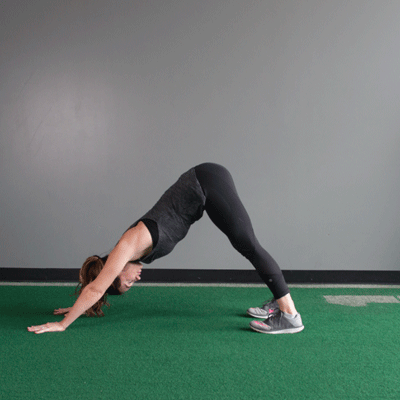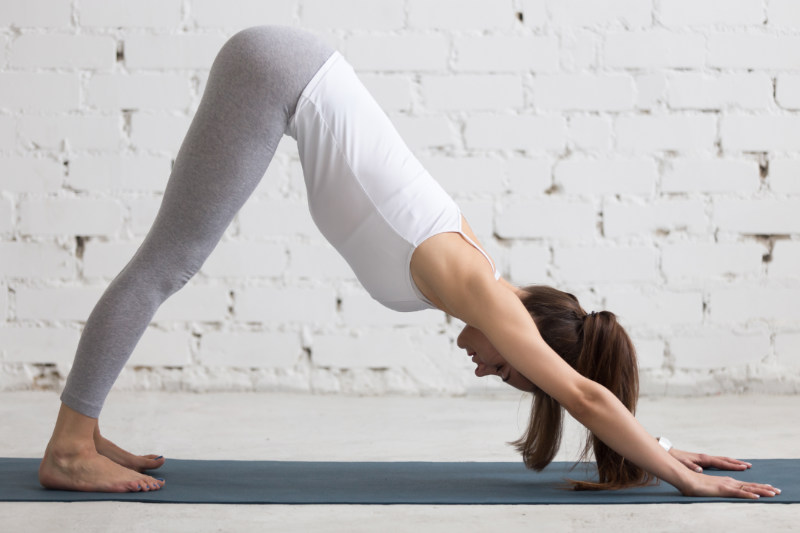
Many of the yoga balance poses are familiar to you. This article will explain the three most well-known ones, including the Tree Pose or Dynamic Dancer Pose. This article will show you how each pose can help balance and stretch your body. You will also learn the benefits of each position. Once you've mastered them, you can move onto more challenging poses, such as the Eagle Pose.
Tree Pose
Tree Poses can be a powerful tool for improving your core. This balancing position requires active engagement of the core. Over time, it can help you build a stronger foundation. This pose can be difficult to master, so it is best to practice it from a different balancing position. Gradually increase your time standing in the pose without bracing yourself.
As you do this, be sure to keep your gaze on your invisible plumb line. You can strengthen your core and inner thighs by strengthening your core. To help you stay steady in this position, place your hand on the wall or hold onto it. Keep your balance! Tree Pose requires a lot of effort. It can also be difficult for those who don't have strong core muscles.
Dynamic Dancer Pose
The Dynamic Dancer Pose, an advanced balancing pose, is the Dynamic Dancer Pose. It requires a playful attitude to be successful. Start by balancing the weight of your body on one foot, then bend the knees of the other leg to lift your heel towards you buttocks. Then reach out to grab your right foot with the left hand. Then, raise your bent leg up to return to the original position.

Although it can be difficult, this pose has many of the same benefits as other balancing postures. This asana requires tremendous flexibility and a strong lower back and leg. Slip disc users should not attempt it, as it puts pressure on their lower back. Although many asanas can be challenging, the Dancer Pose has significant benefits. Therefore, it is best to practice it under a qualified instructor.
Eagle Pose
Eagle is a balancing position that increases flexibility and balance on both the upper and lower levels. The body's left and right side balance masculine energy and feminine energy. This pose is great for people who feel unwell physically or mentally. It aligns the mind and body, and can help to refocus and refresh your thoughts. Eagle can help you if your discomfort is severe. You will experience a greater breathing capacity and lower risk of knee injury from this pose.
You need to ensure that your shoulders remain square and relaxed. Next, cross the left elbow over the right, so that the elbows meet. Once you are comfortable in the position you want, you should press your hands against the mat to feel an opening between your shoulders. Once you are in this position, your gaze should be fixed on one fixed point.
Half Moon Pose
Half Moon Pose is a common balancing pose, and one of the most challenging. This pose places additional stress on the hips and makes it difficult. The following are some tips to help you master the pose and avoid falling. To perform Half Moon Pose correctly, follow these steps. After mastering this pose, you will be able to balance other poses on the ground.
The Half Moon Pose is an excellent stretching exercise for the entire body. This is especially useful if your hamstrings are tight from running or biking. This pose also opens up the chest and shoulders. The challenge of this pose also improves coordination and relieves stress. Start by holding your hands at your waist. Then, step forward with one foot. Now bend your knees and point your back leg towards the sky. Then, lower your right foot to the ground.
Keep your front knee bent

Forward folds are best when your front knee is bent during balalling poses yoga. You will be able to move more easily and have better balance. However, your knees should not touch. This is best done by not waiting to get to the point where your front leg is bent. Instead, fold forward to save some space. Simply put, when your front knee is bent forward, your pelvis naturally tilts towards the fold. This puts more stress on your knees.
This is a great way to learn how to balance while in a yoga class. This will enable you to stretch your back and improve your balance. Keep your front knee bent to prevent twisting stress. This will make the poses more challenging. To do this, increase the distance between your feet. Half-moon position is a great way for strength and balance. The long edge on the yoga mat is at the front of your body.
Finding your drishti (focal point)
For any balance pose, the drishti is the focal point. Keep it in your sight. It is best to locate this point about two to three steps in front of yourself. This will help you remain centered even if your gaze moves to the side. Standing positions such as a handstand require stability around your ankles. To balance these poses correctly, you need patience and focus.
A drishti, which helps align the body, is an important part of yoga practice. You can also use it to maintain good posture during asana. In downward facing dog, for example, your drishti is your navel, while your drishti in warrior II is the fingertips of your forward hand. The gaze is directed toward the feet in forward fold while it is directed toward the torso in twists.
FAQ
Why mental health is important?
Play, work, learning, and love are all important. When we talk about mental health, we're talking about our overall wellness. The physical, psychological as well as social, spiritual and environmental factors that influence us every day are all part of mental health. The good news is that there are many ways to care for yourself mentally, physically, emotionally, spiritually, socially, and environmentally. You don't have to do everything at once; just start somewhere!
Understanding where you are now is the first step to improving your mental health. Take this quiz to see if you're doing enough for your mental well-being. If your score is low, you may want to make some lifestyle changes.
Congratulations! Here are some things you can do that will help improve and maintain your mental health.
-
Get enough rest. Your brain will stay sharp and energized if you get enough rest. The American Academy of Pediatrics (AAP), suggests that you get 7-8 hours of rest each night.
-
Exercise Regularly. Exercise releases endorphins which can make you happy and less likely be stressed. Try to do 30 minutes of exercise five days a week.
What should I do when I'm experiencing mental health problems?
It is vital to seek support if you are experiencing any mental health problems. You might have experienced some sort of trauma or abuse in the past. It is possible that your thoughts about yourself have been affected by this.
An eating disorder, addiction, and other mental illnesses could also be a problem. These disorders can cause serious damage to your life.
You shouldn't try to deal with them on your own. You should speak to someone who understands what you're going through. These challenges can be overcome with the help of a professional therapist.
How does one know if he/she has a mental illness?
Persons may be diagnosed with mental illness if they have symptoms that are disruptive to their daily life. The symptoms of mental disorders vary from person-to-person. The most common symptoms are: sadness, anxiety, guilt, hopelessness, loneliness, depressed and confused, worthless or guilty, suicidal thoughts, and feeling sad.
A person could also be diagnosed if they meet any of the following criteria:
-
Troubled thoughts or feelings
-
Disturbed behavior
-
Disturbance of functioning
-
A decrease in ability to relate with others
What are some signs of mental-emotional difficulties?
Any condition that causes serious distress or impairment of functioning is known as mental disorders. Mental disorders include anxiety, bipolar disorder (depression), schizophrenia, borderline personality disorders, obsessive-compulsive disorders, post-traumatic stress disorder (PTSD), eating disorders, substance abuse and other.
What does mental health have to do with our daily lives?
Everyone is affected by mental illness at one time or another. Mental illness is not something that people who are suffering from it don't seek treatment. Talk to someone when you feel that something isn't right. There are many ways to deal with depression, anxiety, stress, etc., such as therapy, medication, exercise, diet, meditation, and other methods.
What are the five ways to improve wellbeing in your life?
The state of being well is defined as the "state of physical, mental and spiritual well-being." There are many factors that can impact our well-being. Your first step in improving well-being and your quality of life is to identify which areas need improvement. Then, you can work to make these changes.
Here are five tips to boost your well-being.
-
Exercise - Physical activity boosts endorphins which make us happier.
-
Sleep – A longer sleep time reduces stress and anxiety.
-
Nutrition – Eating healthy food (such as fruits or vegetables) will improve your mood.
-
Meditation - Regular meditation helps to reduce stress and anxiety.
-
Socialization: Spending quality time together with our families and friends makes us happy.
Are there any problems with me if my depression is persistent?
Depression is a problem that teens often face. It is important to recognize that depression affects many teens.
This does not mean you are weak or crazy. Most people who feel depressed don’t realize it. Depression can be a medical condition.
There are different kinds of depression. Some people feel only sadness, while some others experience other emotions. There are many levels of severity.
There are mild cases and severe cases of depression. It's important that you understand that depression doesn't always have to be bad. Sometimes, it helps us deal with stressful situations.
If you are constantly feeling sad, tired, or demotivated, it's a good idea for you to visit a doctor. Your doctor can diagnose you and determine whether you need treatment.
Statistics
- Similarly, for positive mental health, there is likely to be substantial agreement about some typical components (e.g., resilience to stress) 6, and controversy about more atypical components (e.g., career consolidation). (ncbi.nlm.nih.gov)
- It does have some influence, but not nearly as much as we might think, so focusing less on attaining wealth will likely make you happier (Aknin, Norton, & Dunn, 2009); (positivepsychology.com)
- It means no drinking any alcoholic beverages and no taking any drugs that aren't 100% natural.
- More than 40 million adults in the United States have an anxiety disorder, but less than 37% of people seek mental health treatment for their symptoms. (talkspace.com)
- More than 50% will be diagnosed with a mental illness or disorder at some point in their lifetime.3 (cdc.gov)
External Links
How To
How to Handle Stress
Stress is normal. We need to learn how to relieve stress. Stress affects every aspect of your life. It can cause headaches and other physical problems, such as neck pain, backache, stomach pain, nausea, vomiting, diarrhea, constipation (insomnia, depression), anxiety, mood swings, muscle spasms, and stomach pain. You may even develop ulcers if you're under chronic stress.
There are many options to reduce stress. Exercise increases endorphin release, which can make you happy and relaxed. Meditation helps reduce stress by slowing down, and taking deep breathes. Yoga is another great option to relieve stress and improve your overall health.
Learn how to control stress and eliminate it. This is the most effective way of managing stress. Ask someone who does.